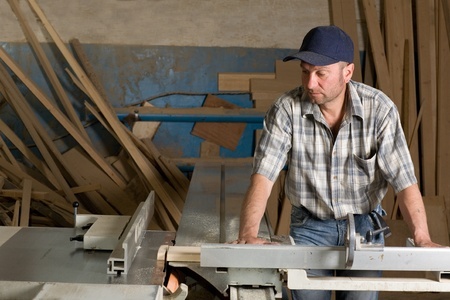

Top 10 Woodworking Safety Tips
Woodworking is a popular hobby and the woodworking industry employs thousands of workers across the country. Woodworkers use woodshop tools that carry risks of woodworking injuries. A survey of amateur and professional woodworkers conducted in New Mexico took a look at the history and rates of woodshop tool related injuries. Sixty-four percent of all woodworking injuries involved woodshop tools. The tool with the highest rate of injuries associated with its use was the jointer-planer at 4.9 injuries per 1000 person-hours of use. Chisels and gouges accounted for 3.3 injuries per 1000 person-hours of use and drill presses for 3.1 injuries. Hammers and table saws were also frequently associated with woodshop injuries. One third of the reported injuries required professional medical care and five percent of respondents experienced partial amputations.
Top 10 Woodworking Safety Tips
Apart from taking a woodworking safety course, following some basic safety tips can help you avoid a woodworking injury.
1. Wear Safety Glasses
You should put your safety glasses on when you enter the woodshop and keep them on until you leave. Do not take a chance with your eyesight!
2. Wear Appropriate Clothing
Avoid loose-fitting clothing and dangling jewelry as it could become tangled in a saw blade or cutting head. Wear clothes that will protect your body from flying wood chips.
3. Avoid Drugs and Alcohol
Hobby woodworkers should avoid using drugs and alcohol while working on their project as they are using dangerous tools.
4. Disconnect Power before Blade Changes
Always disconnect the power from a power tool before changing a bit or blade. Turning off the switch is not safe because it could get bumped back on accidentally.
5. Less Extension Cords
Try using one extension cord for all 110-volt power tools in the shop. This way you will be forced to switch the cord from tool to tool before the tool can be used. This will also help awareness to disconnect the power when making bit or blade changes.
6. Use Sharp Blades & Bits
Dull cutting tools are dangerous as the tool has to work harder to cut and is more likely to kick-back or bind.
7. Check for Nails, Screws, or Other Metal before Cutting
Check the stock for metal pieces such as nails or screws and remove them before cutting. If the cutting tool bumps into a piece of metal it could damage the cutting head and the stock; worse, it could cause kick back which is a common cause of injury. Using a metal detector is a great way to check for metal.
8. Work Against the Cutter
Always ensure that the router bit or saw blade is cutting against the motion of the wood and not in the same direction. The cutter should cut into the stock, not with the stock.
9. Do Not Reach Over a Blade to Remove Cut-Offs
Never put your hands in front of or near a moving blade; be particularly cautious when removing waste or cut-offs. Wait until the blade has stopped moving before reaching in. If possible, use a piece of scrap or stick to push the waste away from the blade. To be absolutely safe, a blade should be unplugged before risking putting your hands close.
10. Avoid Distractions
When you work in a woodshop you are surrounded by potentially dangerous tools so it is important to focus on your task and avoid distractions such as conversation. If you are working with a power tool, finish the cut to a safe conclusion before looking away.
If you or a loved one were injured in an accident, you have enough to deal with. Let an experienced accident attorney fight for the full compensation that you deserve. It is not uncommon to receive a settlement from the insurance company that is five to ten times bigger with the help of a lawyer. Call the caring accident attorneys at Tario & Associates, P.S. today for a FREE consultation! You will pay nothing up front and no attorney fees at all unless we recover damages for you!
Read More